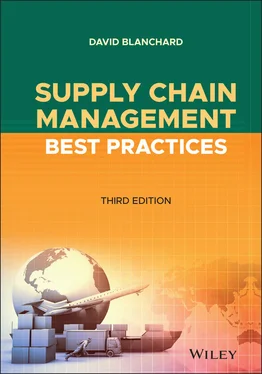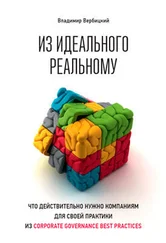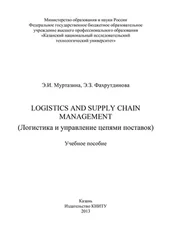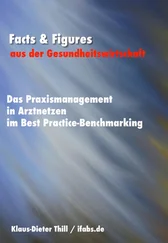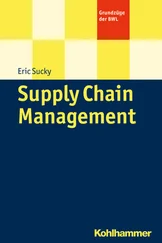“Emerging supply chain leaders are those who can handle the day-to-day work of plan-source-make-deliver while simultaneously seeing further over the horizon,” observes Kevin O'Marah, chief content officer with supply chain research firm SCM World. “This means understanding where the business's strategy is likely to hit a wall or, better still, what confluence of trends might create a sustainable profit opportunity down the road.” 15
Bruce Tompkins, president of supply chain consulting firm MonarchFx, who has worked with many supply chain professionals over a four-decade career, offers these five characteristics of great supply chain leaders:
1 A calm demeanor.
2 Experienced at solving relevant problems.
3 Learner—somebody who has “a good working knowledge of supply chains in general and [their] company specifically,” he says.
4 A good listener.
5 Collaborator. “Great leaders don't do things all by themselves, and set the speed for the entire organization,” Tompkins observes. “They know how to use the people around them to get things done as a team or group.” 16
Booz Allen, the consulting firm that first popularized the term supply chain management , reports that companies with CEO-level support for their supply chain projects have nearly twice the annual savings in customer service costs as companies where the responsibility is lower in the organization. In a survey of senior executives, Booz Allen concludes, “Without guidance and oversight from the CEO and the company's full leadership team, the supply chain's performance often does not live up to expectations.” 17
Best practices don't just happen by throwing a lot of money at your supply chain problems. Improvements come through strategies that identify and track key supply chain processes early and often. As J. Paul Dittmann, director of the University of Tennessee's Office of Corporate Partnership, has observed, very few companies actually have a documented supply chain strategy. 18 “Such a strategy,” he suggests, “starts with assessing the future needs of their customers. The strategy development process then determines the new supply chain capabilities the company will need in the future to meet its customers' needs. Unfortunately, most supply chain organizations are so consumed with the daily battles of cutting cost, managing inventory, and delivering good customer service that they don't plan properly for the future, sometimes with disastrous results.” Indeed, whenever companies experience the first hint of trouble, whether it's the onset of an economic recession or a new competitor that seemingly sprang up overnight, the supply chain strategy is often shelved, where it sits collecting dust for many years.
In short, building and maintaining an end-to-end supply chain organization takes money, but it also takes time, talent, energy, focus, commitment from senior management, and a lot of guts to pull it off successfully. However, those are the qualities that the best-run companies in the world share, and it's why they're on top. As Dittmann says, “supply chain is the frontier of competition.” In the next chapter, we'll look at specific examples of how some well-known companies in a number of different industries are managing their best-in-class supply chains.
All website citations throughout this book were confirmed in November 2020 .
1 1“Enable” was added to the SCOR model in 2012 and basically refers to the management of the other five processes; in other words, supply chain management itself.
2 2 www.cscmp.org.
3 3Forrester spells out many of his theories in the book Industrial Dynamics (Cambridge, MA: MIT Press, 1961).
4 4David Blanchard, “Moving Past the Problems Can Be Problematical,” Chief Logistics Officer (October 2003), 5.
5 5Porter actually uses the term value chain rather than supply chain, but the difference is mainly one of semantics.
6 6Michael Porter, Competitive Advantage: Creating and Sustaining Superior Performance (New York: The Free Press, 1985), 39–43.
7 7Ibid., 318–319.
8 8Carol Hymowitz, “Mind Your Language: To Do Business Today, Consider Delayering,” The Wall Street Journal (27 March 2006), B1.
9 9Blanchard, “Moving Past the Problems Can Be Problematical.”
10 10“Retail CEOs Need to Remove Organizational Silos,” Material Handling & Logistics (24 February 2016), www.mhlnews.com.
11 11Lora Cecere, “Don't Make Supply Chain a Dirty Word!” Forbes (10 December 2013), www.forbes.com.
12 12Daniel Stanton, Supply Chain Management for Dummies (Hoboken, NJ: Wiley, 2018), 73.
13 13Debra Hofman, “The Secret to Supply Chain Excellence Is Balance,” AMR Research Alert Highlight (22 April 2004), 1.
14 14Karen Butner, “Scoring High on the Supply Chain Maturity Model,” presentation delivered at Supply Chain World, Dallas, TX (27 March 2006).
15 15Kevin O'Marah, “Supply Chain Leaders Making the Move to CEO,” Forbes (21 April 2016), www.forbes.com.
16 16Bruce Tompkins, “5 Traits and Examples of Great Supply Chain Leaders,” Tompkins International (8 April 2020), www.tompkinsinc.com.
17 17Peter Heckmann, Dermot Shorten, and Harriet Engel, “Supply Chain Management at 21,” Chief Logistics Officer (August 2003), 19–24.
18 18J. Paul Dittmann, “What's On the Minds of Supply Chain Professionals Today?” IndustryWeek (1 June 2009), www.industryweek.com.
CHAPTER 2 Anatomy of a Supply Chain
Flashpoints
Best-in-class supply chains share many common characteristics, no matter what industry they're in.
It takes a coordinated team effort to build, maintain, and sustain a well-run supply chain.
Best practices don't just happen—somebody has to champion them, devise them, and then apply them.
Supply chains are defined as much by their similarities as by their differences. While there may not appear to be much in common between, say, a multibillion-dollar big-box retailer and a single-site mom-and-pop shop, in fact both companies operate on the same principle: When you're out of stock, you're out of business. With out-of-stock rates averaging 10% (in some product categories, it can be considerably higher), having products on the shelves is the be-all and end-all of retail life. So retailers of all shapes and sizes—whether they're mass discounters the size of a small country like Walmart or a modest chain of three comic book stores—are naturally inclined toward adopting best practices that will maximize their revenues (e.g., rapid replenishment) while minimizing their costs (e.g., demand planning).
The story is much the same for manufacturers, distributors, nonprofits, service industries—in short, any organization that makes or moves products, whether physical or digital, has common supply chain challenges. According to Jim Tompkins, chairman of supply chain consulting firm Tompkins International, top-performing supply chains share the following seven characteristics:
1 They have a clear supply chain strategy as their foundation. This strategy is based on a deep understanding of the company's business strategy.
2 They are adaptable and quick, which allows them to compete in today's dynamic environment.
3 They are transparent, have clearly stated performance expectations, and have a culture of accountability to their customers.
4 They are focused on continuous improvement throughout the supply chain, and aim at peak-to-peak performance.
5 They know their strengths and their weaknesses, and participate in benchmarking activities.
6 They have an end-to-end perspective, focusing on the supply chain activities of plan-buy-make-move-store-sell (Tompkins' tweak of the SCOR model's basic definition of the supply chain as plan-source-make-deliver-return-enable).
Читать дальше
